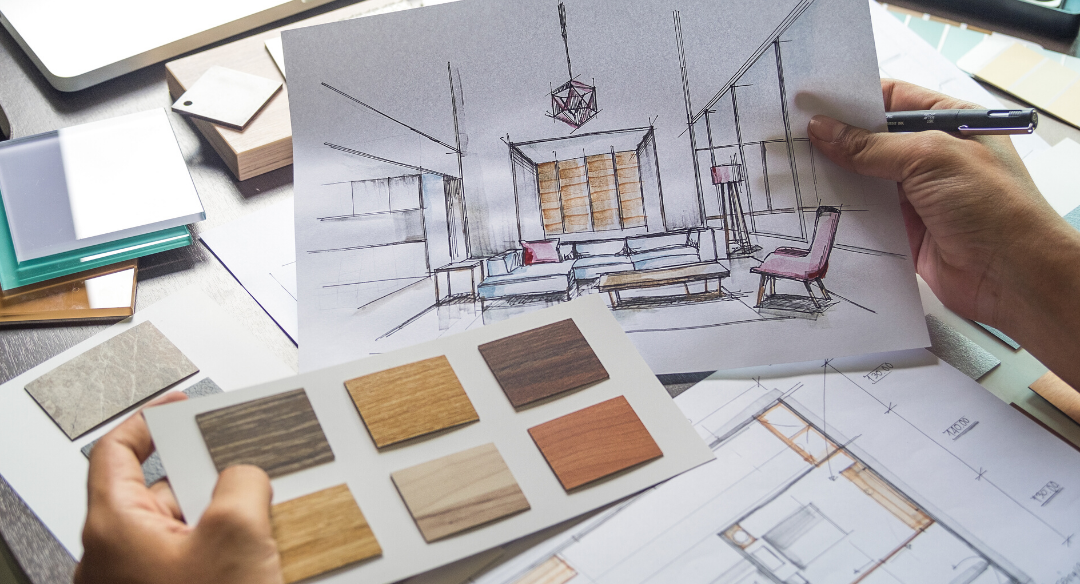As you’re combing through Pinterest and other resources, dreaming about your home or office makeover, you’ve likely come across “interior designer” and “interior decorator.” Often these words are used interchangeably. But what exactly is the difference between them—or is there one? Who should you turn to for your next project?
Keep reading as we explore the similarities, differences, and what you need to know.
What Do You Need?
Interior designers and interior decorations both typically have the same key skills, including creativity, organization, and a strong knowledge of how colors and textiles work together. But beyond that, there are some important differences to know. So first, think about your upcoming project.
Are you thinking about structural changes, like moving your plumbing or adding a new window or doors? Do you want somebody that can enhance the overall flow of your space and think deeply about how the space will be used? Or, are you building an entirely new home or office? If so, you’ll want to turn to an interior designer.
Interior designers are essential for these types of larger-scale changes. They can help with spatial planning as well as renovations, including working with architecture design or drawing their own floor plans to improve the function and purpose of a room. They’ll take the time to understand human behavior and how your family, employees, or customers might interact within the space, and make recommendations based on that. From the light switches to your coffee table decor, an interior designer ensures your space is perfect both aesthetically and functionally.
On the other hand, interior decorators often specialize in just that: decorating. If you’re just looking for help with aesthetics, moving furniture, and final decor touches, an interior decorator can do the job. This might include things like selecting paint schemes, choosing the right lighting, and picking window treatments. They may also recommend moving furniture, but they wouldn’t be recommending any structural changes.
When Do You Need It?
Another way of looking at it is: when do you want the help? Again, if you’re building from scratch or if you’ve got remodeling in the works, you’ll likely want an interior designer to be there from the very start. These professionals will work closely with your architect and contractors, often handling all of the communication along the way. In some cases they may also be hired directly by an architect or developer, or already work alongside them at an architectural firm.
Because of their schooling (more on this later), you can expect your interior designer to be well-versed in local building codes, accessibility, and fire safety—so you’ll feel safe and comfortable throughout the process.
After structural changes are made or the framework is set, they’ll step into more of a traditional decorator role, focusing on finding the perfect decor and final touches.
Alternately, an interior decorator would only step in at this point, working with homeowners or business managers to complete the space. Typically a decorator only works on residential projects, but sometimes there is commercial work as well.
A Note on Schooling and Credentials
As you think about your upcoming project, you may also want to consider how important education and credentials are to you.
Interior design requires formal training, which includes subjects like furniture design, architecture, and computer-aided design (CAD) training. Many complete the National Council for Interior Design Qualification (NCIDQ), as well as work as an apprentice before starting their own practice. To take the exam, applicants need to have at least six years of combined work experience and college education.
Some states require this type of training, while others do not— so you’ll want to check in with your designer on their training and experience if that’s something that is important to you.
Interior decorators aren’t required to have any formal training, but often take courses to learn about furniture styles, colors, and fabrics. They may also have a certification from the CID (Certified Interior Decorators International).
Working with Interior Designers and Decorators
In a nutshell: interior designers can design and decorate, while interior decorators can decorate but don’t typically do a full “design” of your space. To know which is right for you, you’ll need to think through your project and what you’re trying to get out of it.
Beyond that, remember that every designer (and decorator) is different! We always recommend booking a consultation so you can meet with your interior designer and talk through your vision. Are you looking for a designer to elevate your current style, or provide a complete change? What colors, style, and looks do you love? Get that Pinterest inspiration board ready to share!
At Nativa Interiors, we’re here to help every step of the way. Since 2001, we’ve grown to become a staple in Southern California, with two beautiful showrooms in La Jolla and Solana Beach. And we have furnished thousands of homes in Southern California as well as in the South of France, Cabo San Lucas, Telluride, New York, Mexico City, Vancouver, Tokyo, and many other corners of the world.
Want to learn more about what we can do for you? Book your consultation today!


